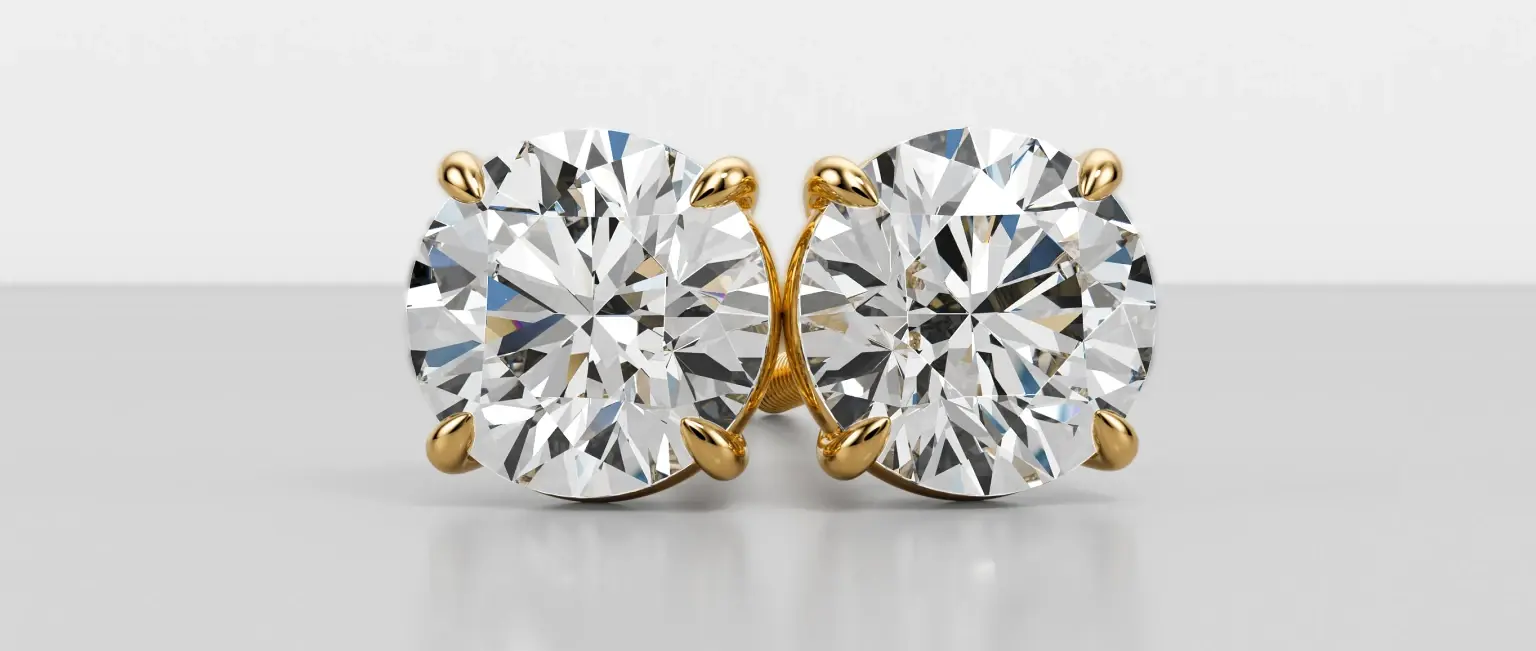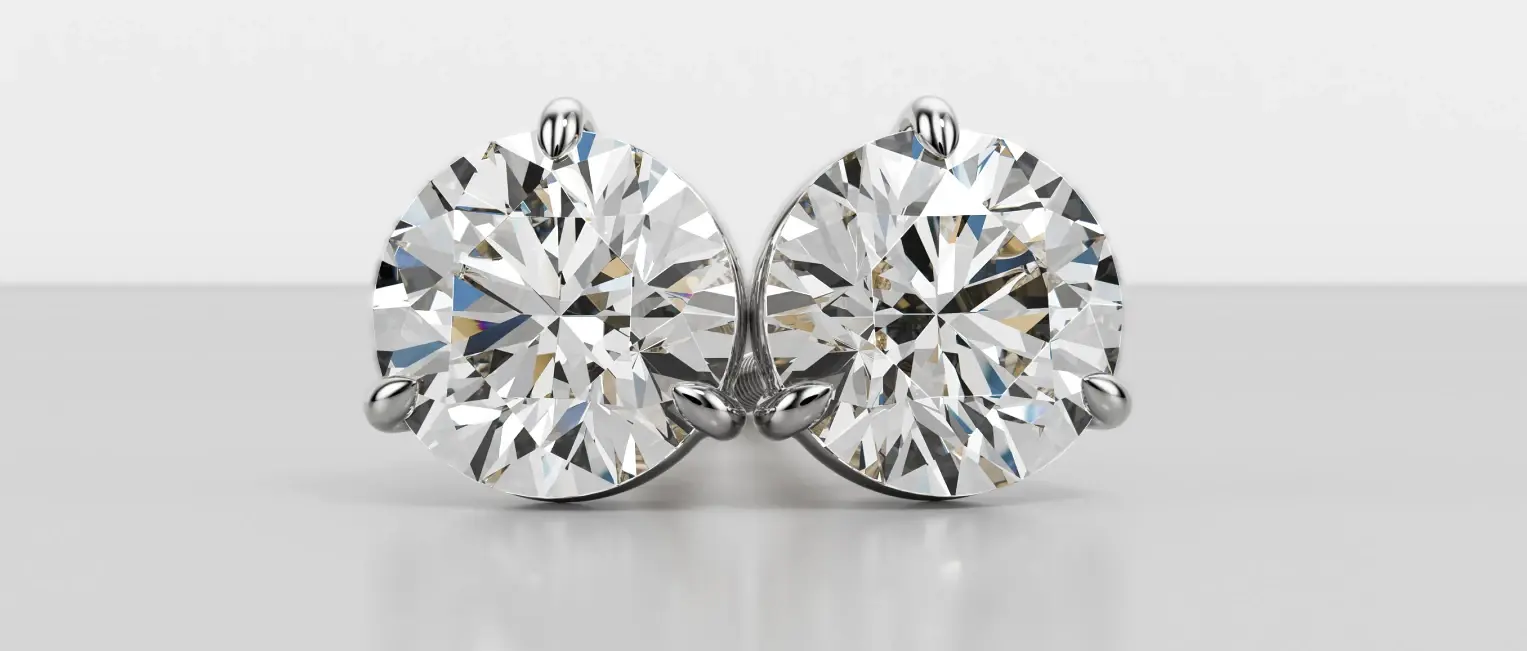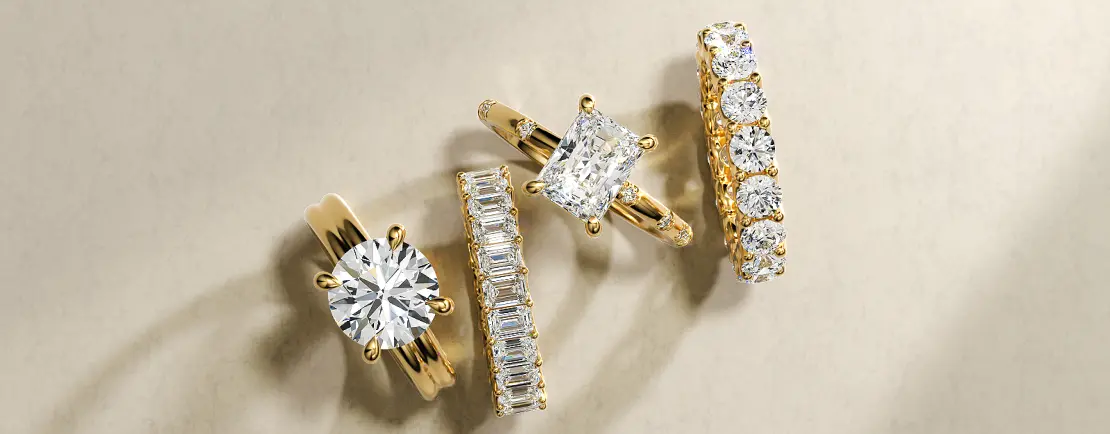- Home
- /
- Diamond education
- /
- Diamond Anatomy
- /
- Diamond Depth
Understanding Diamond Depth
April 19, 2023
Each diamond is unique, and no two customers search for exactly the same thing. They often begin their search with the same basic information, though. When most people pick out a stone, they’ve heard of the four C’s - cut, clarity, color, and carat. However, they likely don’t know everything that goes into those measurements. That type of insight is helpful in choosing (or selling) a stone, and diamond education always results in a more informed conversation during purchase.
For instance, cut is one of the significant components of a diamond, but how is cut determined? It’s more complex than simply tossing out a word like “princess” or “oval.” This article explores the concept of diamond depth, which is an element of its cut, and how depth affects the appearance and quality of a diamond. Spoiler alert: it’s important!
What is Diamond Depth?
In the simplest terms, a diamond’s depth is the measurement from the top to the bottom. You’ll see it written as a percentage and millimeters. Depth changes depending on the cut of your diamond, so you’re not searching for a specific number across the board.
Diamond depth works hand-in-hand with a diamond’s table, which is the flat surface on top of the stone. When both elements are balanced correctly, you end up with a brilliant, sparkling stone that reflects light in the most beautiful way.

How is Diamond Depth Measured?
Depth is determined by measuring from the diamond’s table (at the top) to the cutlet (at the bottom). The depth percentage is then determined by dividing its height by its width. If you see a higher percentage score, that means the diamond is deeper.
High scores are not necessarily better or worse, though, as the “best” depth varies depending on the cut and how it interacts with the diamond’s table.
Why is the Diamond Depth Important?
Diamond depth has a considerable effect on the diamond’s appearance. It can profoundly alter brilliance and fire, as the right depth allows light to pass through the stone and create sparkle.
Depth changes the pathway that light takes through the stone, so diamonds that are too shallow or too deep will seem dull and lack the “life” of a higher-quality piece. This is true regardless of the diamond cut, as each particular style has an ideal range of depth. If the depth is too deep or too shallow, it always negatively impacts appearance, especially when looking at the diamond from the top down.
What Is the Ideal Diamond Depth?
There isn’t a perfect diamond depth that applies across the board. The right depth percentage depends on the cut of diamond you choose. A round diamond doesn’t have the same depth requirements as an emerald cut, for instance, so there are multiple factors to consider.
Depth is graded, so you’ll know that your diamond has less-than-ideal depth if it receives a grade below what you want. “Poor” signifies exactly that - poor depth quality. Keep in mind, depth is not the only factor that affects appearance. It’s part of the whole picture of a diamond.
As a general rule of thumb, these are the “Excellent” depth percentages corresponding with the following cuts.
| Diamond Shape | Excellent |
|---|---|
| Round | 59% - 62.3% |
| Princess | 67% - 72.9% |
| Cushion | 63% - 67.9% |
| Emerald | 63% - 67.9% |
| Oval | 58% - 62.9% |
| Pear | 67% - 72.9% |
| Radiant | 61% - 67.9% |
| Marquise | 58% - 62.9% |
As you can see, there is a considerable amount of variation between cut styles. If you’re searching for a “Very Good” quality diamond, there is a bit more allowance with the percentages, too. It’s typically advised that diamond shoppers avoid anything rated lower than “Very Good”.
How Does Diamond Depth Affect a Diamond’s Value?
Because depth has a profound impact on a diamond’s appearance, low-quality depth ratings do affect the stone’s value. A diamond potentially loses thousands of dollars in value if it has a particularly low-quality depth percentage and receives the resulting low grade. It’s no mystery why, either. Even when a stone is properly set in an otherwise beautiful ring or piece of jewelry, its appearance is drastically altered by skewed depth.
What is the Difference Between Shallow-Depth and Deep-Depth Diamonds?
These two terms appeared frequently throughout the article, but what do they actually mean? Going too far in either direction produces the same dull effect, but it is achieved differently.
SHALLOW: Shallow diamonds are stones that are too short. The light moves quickly from the top to the bottom of the diamond, causing a loss of shine and brilliance. You can spot a shallow diamond if its depth percentage dips below the recommended numbers for an “Excellent” or “Very Good” grade.
DEEP: A too-deep diamond has the opposite problem. Light gets lost through the bottom of the diamond and consequently loses a lot of shine and brilliance. Additionally, diamonds with deep cuts may appear smaller than other stones with the same carat weight. Since depth is measured through a combination of length and width, those proportions are off in too-deep diamonds. You could end up with a diamond with shorter width, which consequently looks smaller even in a great setting.

Final Thoughts
A lot goes into making the “perfect” diamond, and everyone’s definition of that term varies. Even a diamond’s cut consists of more than just its depth. It is an important part of it, though, and shouldn’t be overlooked. Many people want a stone that sparkles and catches the eye, and depth is a major factor in achieving that look.
As you search for the perfect diamond, take a glance at the depth percentages and determine how they stack up against the numbers listed above. In the end, the customer’s preference matters more than any number on a page, but understanding what depth is and how it affects the look of a stone is a great piece of information for the hunt.





















